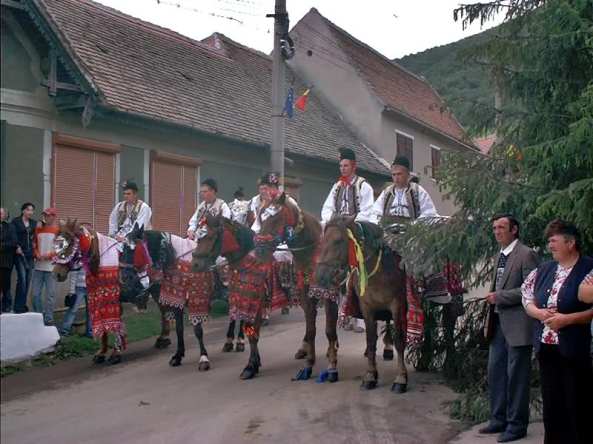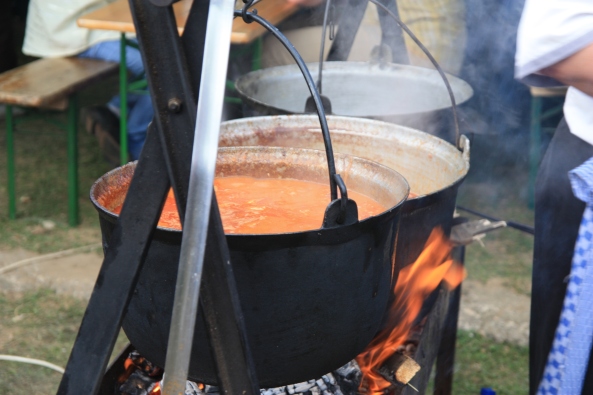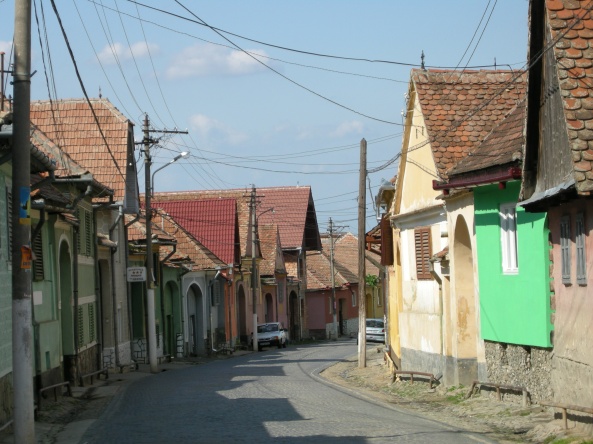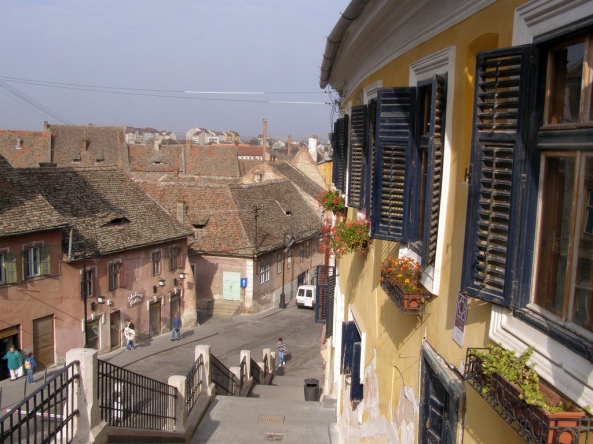Marginimea Sibiului este o zona etnografica unica in Romania. Situata in sud-vestul judetului Sibiu, Marginimea Sibiului ocupa zona sub-carpatica de la Olt pana la Sebes, avand ca limitã nordica linia ferata Talmaciu – Vintu de Jos. Intr-o acceptiune mai restransa, Marginimea Sibiului este teritoriul din fostul Ducat al Amlasului, avand drept nucleu satele din jurul cetatii Salgo, dintre care cel mai reprezentativ era Salistea (Magna Villa Valachicalis), fost sediul al scaunului cu acelasi nume.
Marginimea Sibiului, prin aspectele sale de cultura materiala si spirituala se inscrie intre cele mai vechi vetre ale etnogenezei romanesti. Marturiile arheologice, scoase la lumina pana acum, atesta prezenta omului pe aceste meleaguri, inca din perioada paleoliticului mijlociu ( cca 100.000 – 40.000 î.e.n. ).





Numele ,,margineni” a fost dat locuitorilor acestor sate din judetul Sibiu deoarece locuiau intr-o zona de contact intre deal si munte pe vechea frontiera austro-ungara din sudul Transilvaniei. Aceasta zona era una agro-pastorala, satenii avand ocupatia principala crestera animalelor. In timpuri îndepartate pastorii isi duceau turmele in cautarea pasunilor bogate pana dincolo de Dunare spre Constantinopol sau spre Adriatica, dincolo de Tisa in Polonia, iar spre rasarit pana in Caucaz, dovedind multa tenacitate si dorinta de cunoastere specifica acestor locuri. Astfel, in aceste sate se simte influenta diferitelor culturi.
Descrierea zonei
Zona are o boga?ie excep?ionala a obiceiurilor legate de diferite momente din via?a. ?i astazi exista obiceiul de a purta costumul popular tradi?ional – alb-negru cu o palarie rotunjita purtata de barba?i la evenimentele importante. Pictura pe sticla este o tradi?ie, în strânsa legatura cu introducerea manufacturilor de sticla de catre autorita?ile imperiale austriece, tradi?ie receptata în secolul al XVIII-lea de Biserica Româna Unita, apoi de Biserica Ortodoxa, care s-a reimpus în zona.
Arhitectura are influen?e puternice sase?ti, cu case mari, impunatoare, cu o curte interioara închisa din toate par?ile. Lemnul a fost materialul de construc?ie tradi?ional, dar în ultima suta de ani a fost însa înlocuit de caramida.
Atrac?ii turistice
Biserica din Rasinari
Cea mai veche biserica româneasca din zona se afla la Sali?te, iar picturile din ea dateaza de la 1674. Alte biserici vechi sunt bisericile din lemn de la Poiana Sibiului – 1771, Fântânele (Cacova) – ridicata între 1772-1774 – ?i Talmacel – 1776.
În Ra?inari ?i Sali?te exista câteva mici muzee ale satului ?i case memoriale.
În Sibiel exista un muzeu al icoanelor pictate pe sticla, iar la Fântânele (Cacova) exista, din anul 1995, un muzeu mixt (etnografic ?i de arta bisericeasca).
Lânga Tili?ca au fost descoperit urme ale civiliza?iei dacice. Un alt muzeu se afla la Sadu, locul în care a fost construita cea de-a treia uzina hidro-electrica din Europa.
Marginimea Sibiului is an area which comprises 18 Romanian localities in the south-western part of the Sibiu County, in southern Transylvania, all of them having a unique ethnological, cultural, architectural and historical heritage.
Position
The area is situated in the immediate vicinity of the cradle of Saxon Civilisation in Transylvania – the city of Sibiu, and has an area of over 200 km² limited by the Sadu River in the south and the Saliste river in the north. The villages are situated around the valleys of different rivers which flow from the Cindrel Mountains through the Transylvanian Plateau.
Brief history
The oldest known village is Rasinari, which dates to 1204, followed by Talmaciu (1318), Orlat (1322) and Saliste (1354). Throughout their history, these settlements were sometimes (along with the Tara Fagarasului) part of the Romanian principality of Wallachia. An important event in the area was the establishment in the 18th century by Maria Theresa of the 1st Romanian border regiment at Orlat. Also, Boita was a border village, at the end of the passageway along the Olt River.
[edit] Occupations
Predominantly, the people were shepherds who continuously crossed the Carpathian Mountains, maintaining the essential link between the Romanian communities to the north and south of the mountains. Activities closely related to shepherding, such as wool and leather manufacturing, are still well maintained in the area to this day.
The area has a rich variety of customs related to different times in the year and in life. To this day, it is a custom to wear the traditional folk costume – black and white, with a particular round shaped hat without borders worn by the men at the most important occasions. Painting on glass is a tradition in this area, strongly connected to the Romanian Orthodox Church which is by far the main religion of the inhabitants.
The architecture is strongly influenced by the Saxons, with big imposing houses, with an internal yard well closed on all sides. Wood was traditionally the main material used in construction, but bricks have replaced it in the last hundred years; today, only a small number of wooden houses can be found.
The church in Rasinari as of January 2005
The oldest church in the area can be found at Saliste; it is a painted church dating to 1674. Other old churches are the wooden church from Poiana Sibiului – 1771 – and the church from Talmacel – 1776.
In Rasinari and Saliste there are some small village museums and also memorial houses. Emil Cioran is the best-known personality to have been born in this area. Additionally, Octavian Goga, a Romanian poet and a politician from the interwar period, along with more than six Romanian academicians, are natives of this area. There is a museum in Sibiel dedicated to glass-painted icons.
Close to Tilisca there can be found the remains of a Dacian citadel, situated on a hilltop with a panoramic view towards the Transylvanian Plateau.
A more modern museum can be found in Sadu, the place where the first electrical hydro-power plant was built in 1896 – the third one in Europe.
source : wikipedia
















